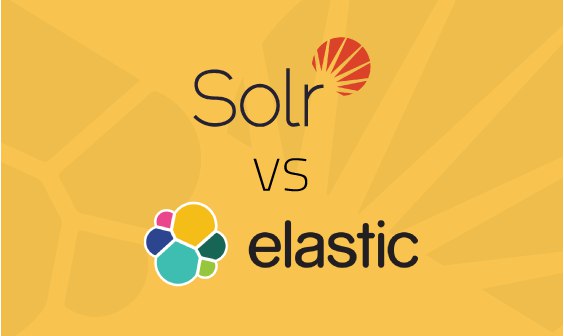AS
Size: a a a
2020 August 19
Из коробки нет
КТ
а, т.е. не установил и работаешь по старому подходу?
AS
L
Омг
L
Кто тут маленький
L
КТ
что лучше для полнотекста?
elastic или solr
elastic или solr
DL
что лучше для полнотекста?
elastic или solr
elastic или solr
https://logz.io/blog/solr-vs-elasticsearch/
Use Cases
While both products are document-oriented search engines, Solr has always been more focused on enterprise-directed text searches with advanced information retrieval (IR). Consequently, it’s more suited for search applications that use massive amounts of static data. Solr fits better into enterprise applications that already implement big data ecosystem tools, such as Hadoop and Spark. Additionally, Solr stands out in handling Rich Text Format (RTF) documents. To compete with Elasticsearch, recent Solr releases have offered new features such as Parallel SQL Interface and streaming expressions.
Elasticsearch is focused more on scaling, data analytics, and processing time series data to obtain meaningful insights and patterns. Its large-scale log analytics performance makes it quite popular. Elasticsearch is more suited to modern web applications where data is carried in and out in JSON format. Elasticsearch has also put a lot of development effort into making its tool more resilient. This turns it into a primary data store.
Use Cases
While both products are document-oriented search engines, Solr has always been more focused on enterprise-directed text searches with advanced information retrieval (IR). Consequently, it’s more suited for search applications that use massive amounts of static data. Solr fits better into enterprise applications that already implement big data ecosystem tools, such as Hadoop and Spark. Additionally, Solr stands out in handling Rich Text Format (RTF) documents. To compete with Elasticsearch, recent Solr releases have offered new features such as Parallel SQL Interface and streaming expressions.
Elasticsearch is focused more on scaling, data analytics, and processing time series data to obtain meaningful insights and patterns. Its large-scale log analytics performance makes it quite popular. Elasticsearch is more suited to modern web applications where data is carried in and out in JSON format. Elasticsearch has also put a lot of development effort into making its tool more resilient. This turns it into a primary data store.
КТ
https://logz.io/blog/solr-vs-elasticsearch/
Use Cases
While both products are document-oriented search engines, Solr has always been more focused on enterprise-directed text searches with advanced information retrieval (IR). Consequently, it’s more suited for search applications that use massive amounts of static data. Solr fits better into enterprise applications that already implement big data ecosystem tools, such as Hadoop and Spark. Additionally, Solr stands out in handling Rich Text Format (RTF) documents. To compete with Elasticsearch, recent Solr releases have offered new features such as Parallel SQL Interface and streaming expressions.
Elasticsearch is focused more on scaling, data analytics, and processing time series data to obtain meaningful insights and patterns. Its large-scale log analytics performance makes it quite popular. Elasticsearch is more suited to modern web applications where data is carried in and out in JSON format. Elasticsearch has also put a lot of development effort into making its tool more resilient. This turns it into a primary data store.
Use Cases
While both products are document-oriented search engines, Solr has always been more focused on enterprise-directed text searches with advanced information retrieval (IR). Consequently, it’s more suited for search applications that use massive amounts of static data. Solr fits better into enterprise applications that already implement big data ecosystem tools, such as Hadoop and Spark. Additionally, Solr stands out in handling Rich Text Format (RTF) documents. To compete with Elasticsearch, recent Solr releases have offered new features such as Parallel SQL Interface and streaming expressions.
Elasticsearch is focused more on scaling, data analytics, and processing time series data to obtain meaningful insights and patterns. Its large-scale log analytics performance makes it quite popular. Elasticsearch is more suited to modern web applications where data is carried in and out in JSON format. Elasticsearch has also put a lot of development effort into making its tool more resilient. This turns it into a primary data store.
спасибо.
Elastic wins
Elastic wins
2020 August 20
N
SR
что лучше для полнотекста?
elastic или solr
elastic или solr
Одно это надстройка над другим
КТ
Одно это надстройка над другим
разве обе не над lucene?
SR
разве обе не над lucene?
мб
SR
для полнотекста я бы прикрутил какой-нибудь движок полегче
КТ
например?
DL
для полнотекста я бы прикрутил какой-нибудь движок полегче
D
слишком слабо чот






